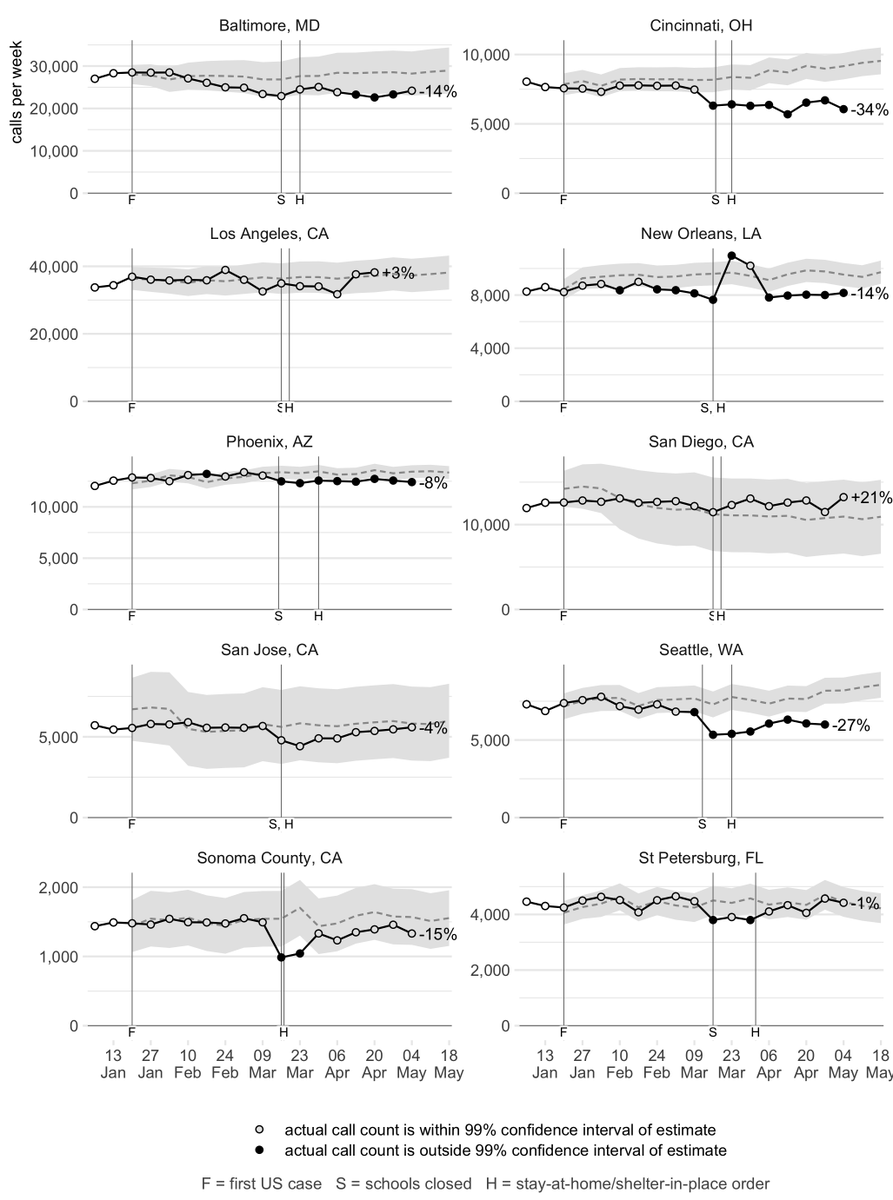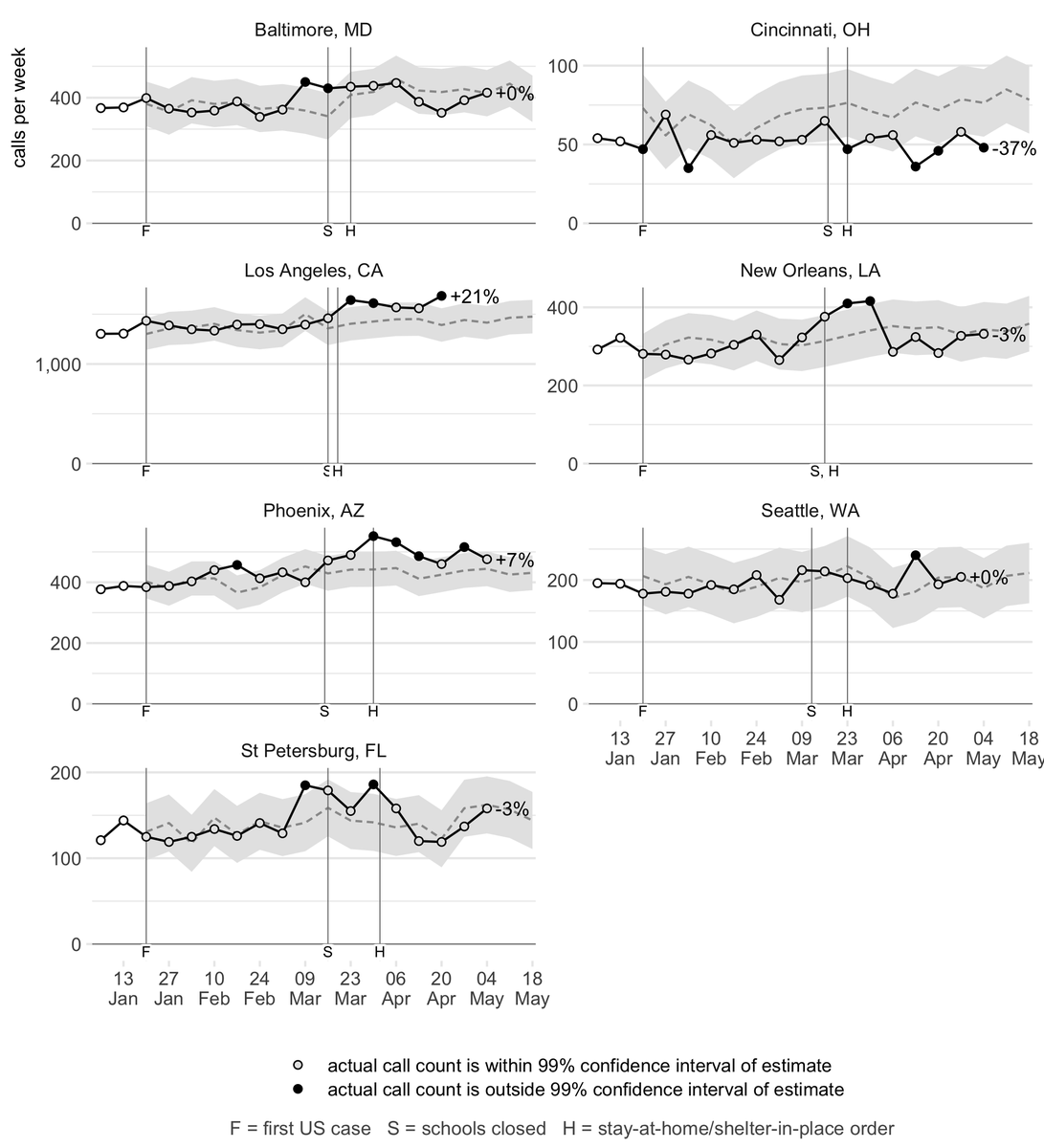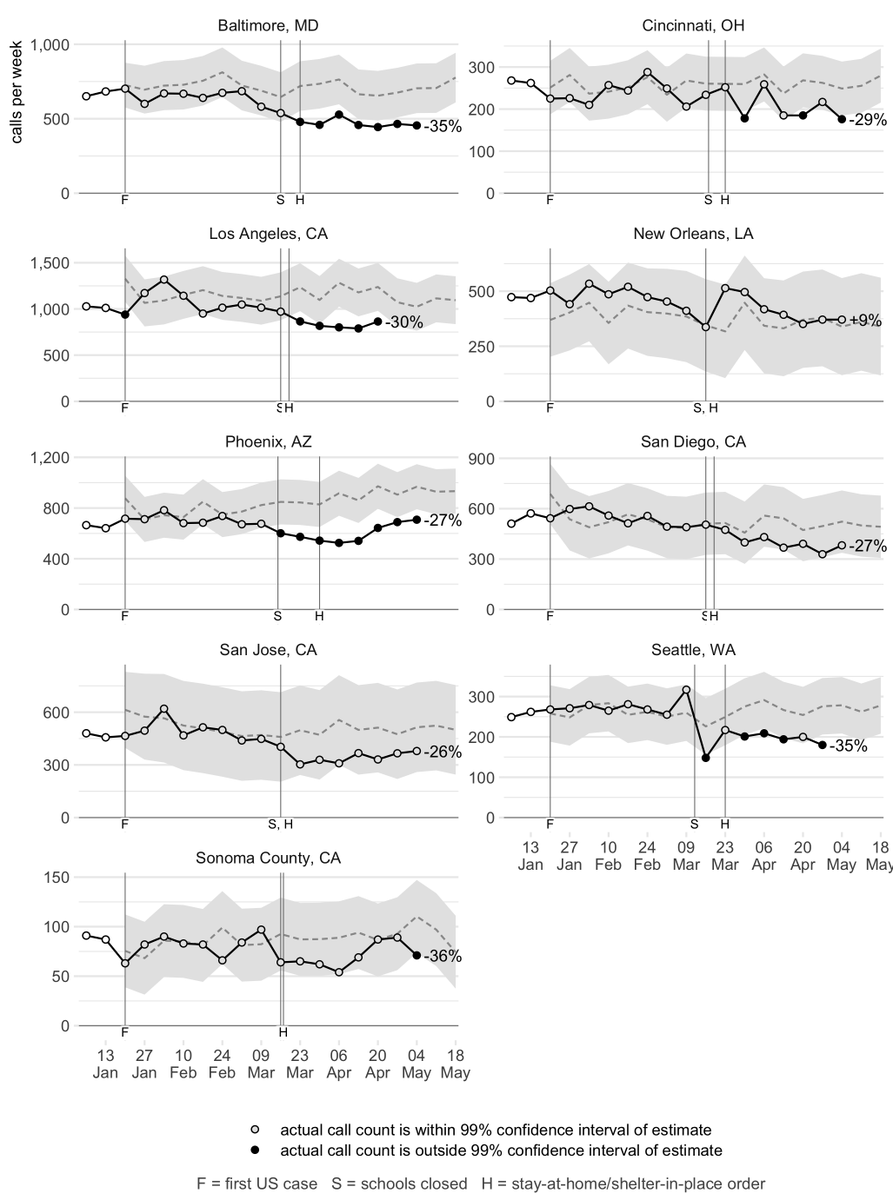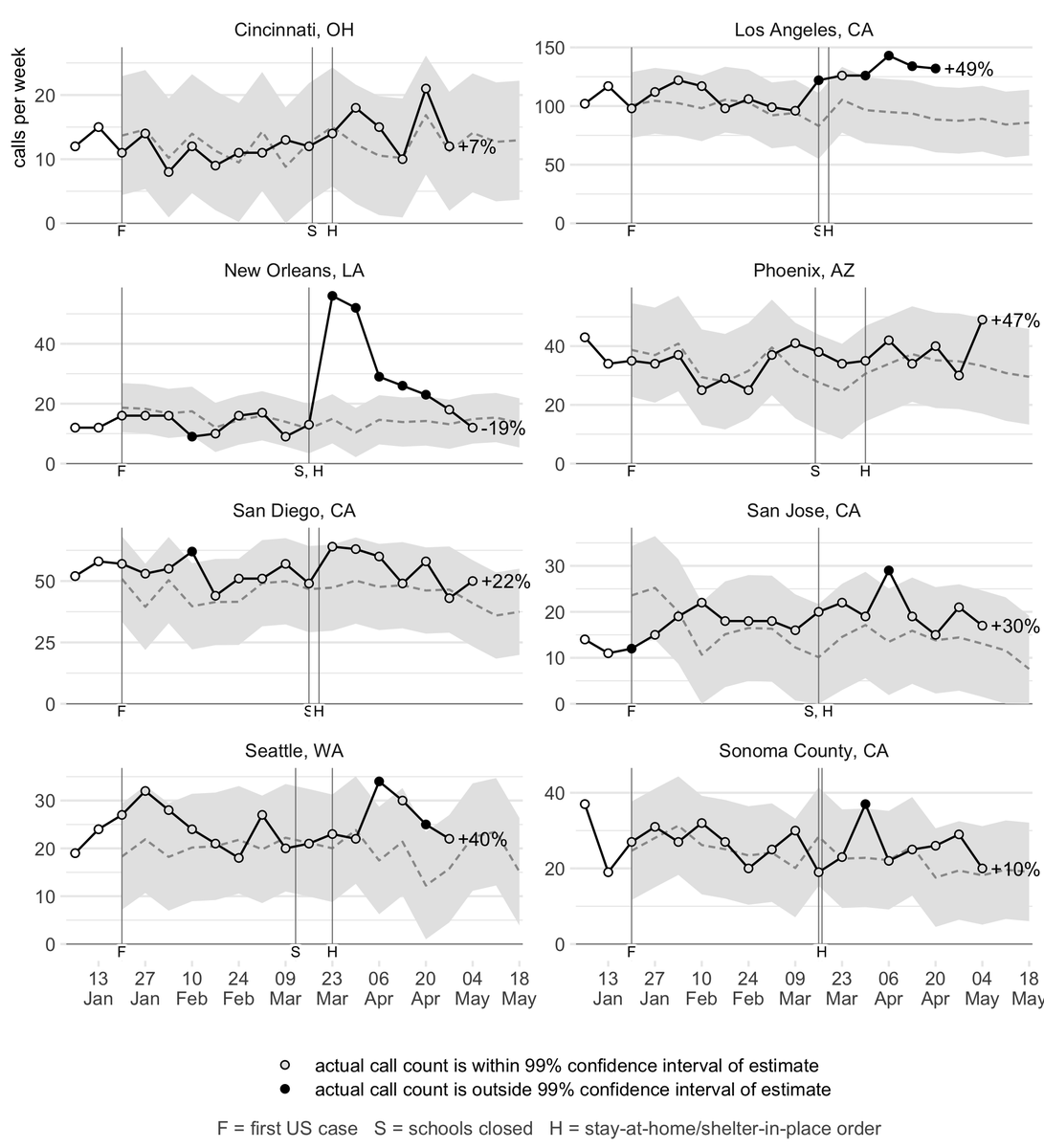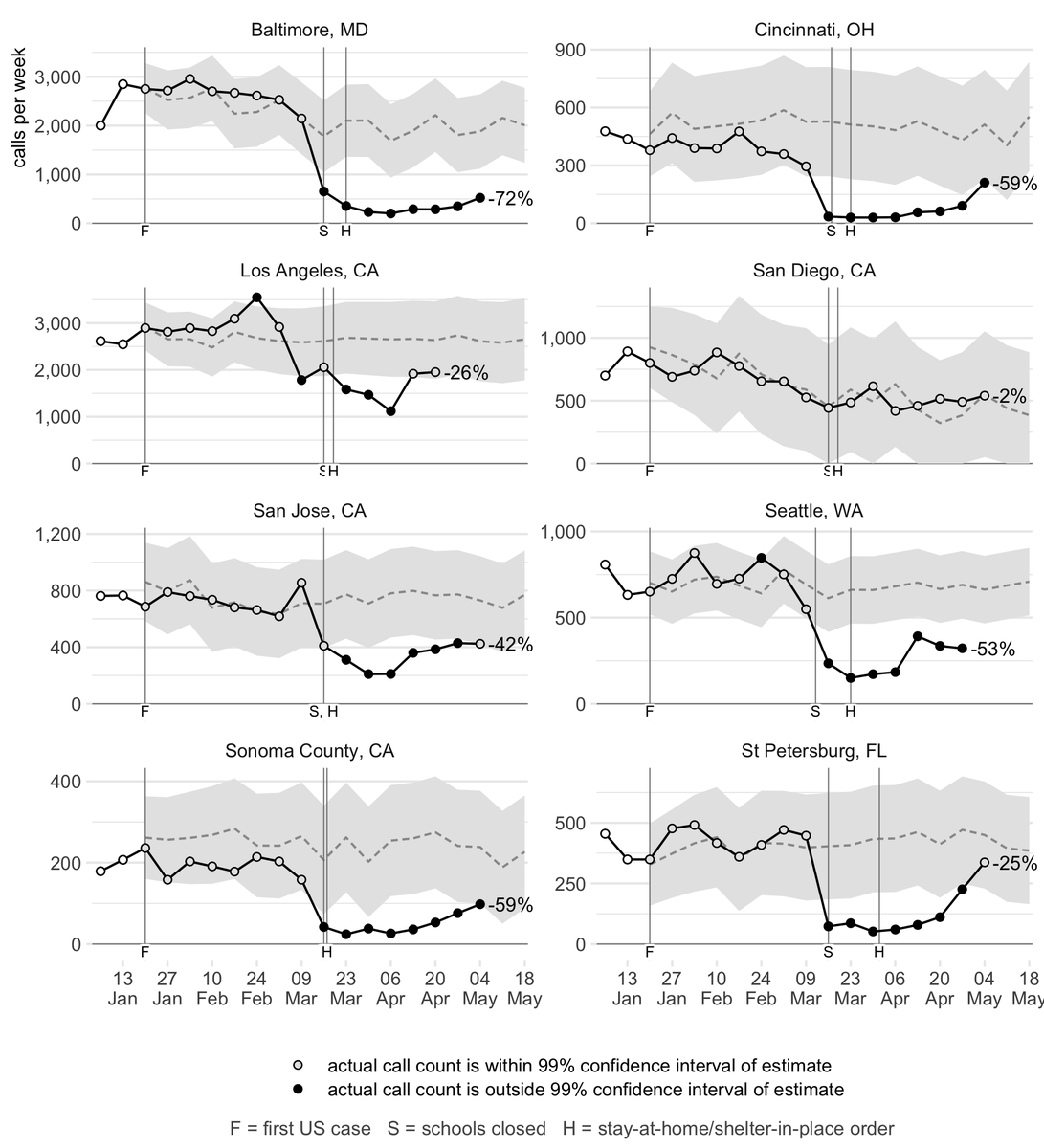I& #39;ve posted a new article pre-print (currently undergoing peer review) on @socarxiv on how police calls for service have changed during the pandemic in ten large US cities https://doi.org/10.31235/osf.io/h4mcu
Thread">https://doi.org/10.31235/... with some results …
Thread">https://doi.org/10.31235/... with some results …
Police pandemic contingency plans often assumed demand from 911 calls would go up during a pandemic, but overall calls have actually been either lower than or the same as expected.
But not for all types of call …
But not for all types of call …
Calls to domestic violence or family disputes were significantly higher than expected in three cities, but lower than expected in one. This contrasts with the frequency of domestic assault crimes, which a previous paper found have stayed as expected: https://twitter.com/LessCrime/status/1254794241508880384">https://twitter.com/LessCrime...
Calls to other types of crime (assaults, burglary, robbery, shootings, vehicle theft) remained broadly as would be expected normally – despite everything, police must still respond to the same types of call as always
Calls to some types of calls have dropped substantially, e.g. in the four weeks after lockdown began in Baltimore, there were about 860 fewer calls to intruder alarms than would have been expected without coronavirus
Other call types were much higher than would be expected without COVID-19, including about 180 extra calls to dead bodies in Los Angeles – this raises big issues, such as difficulties determining if deaths are suspicious and the extra trauma faced by officers
Proactive policing changed substantially, too, with recorded traffic stops in Cincinnati 94% below what would be expected based on previous trends, and stops 66% lower than forecast across all 10 cities
Future pandemic waves/future pandemics are likely to mean police must quickly react to changing demand, so hopefully this analysis is helpful in working out which call types are likely to go up and which go down. Much more detail in the free pre-print at https://doi.org/10.31235/osf.io/h4mcu">https://doi.org/10.31235/...
This paper uses ARIMA models to forecast how many calls of each type we& #39;d expect without COVID-19. This avoids drawing potentially misleading conclusions from binary comparisons, as I wrote about at https://the-sra.org.uk/SRA/Blog/whyyoucantidentifychangesincrimebycomparingthismonthtolastmonth.aspx
Details">https://the-sra.org.uk/SRA/Blog/... in the paper https://doi.org/10.31235/osf.io/h4mcu
[end]">https://doi.org/10.31235/...
Details">https://the-sra.org.uk/SRA/Blog/... in the paper https://doi.org/10.31235/osf.io/h4mcu
[end]">https://doi.org/10.31235/...

 Read on Twitter
Read on Twitter